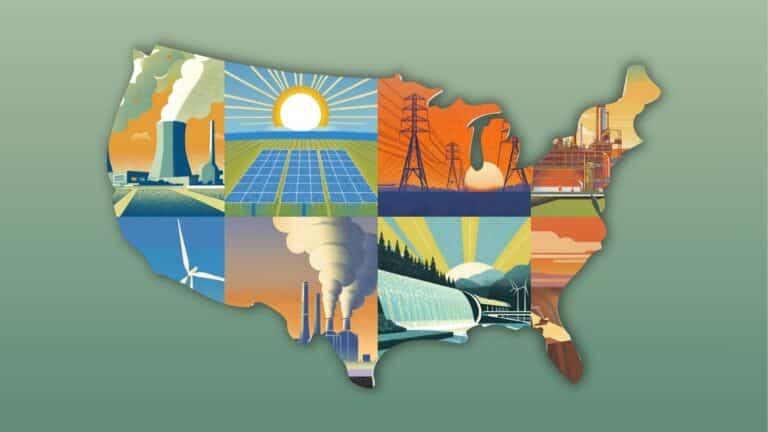Varcoe: Danielle Smith wants Canada to play ‘long game’ on U.S. tariffs, touts energy co-operation
In the face of Trump's tariffs, Alberta Premier Danielle Smith wants Canada to focus on getting to a mutually beneficial trade resolution.
Current Access Level “I” – ID Only: CUID holders, alumni, and approved guests only
Director of Immigration Strategy, Emerson Collective
Shana Tabak: If we can better prepare cities and local leaders to develop locally led solutions that are community oriented, that figure out ways to support people so that they can stay close to home and potentially return home. That’s really, I think, one of the best ways that we can mitigate some of the drivers and some of the worst impacts of climate migration.
Bill Loveless: Throughout the world, climate change is influencing human migration. In a 2022 report, the Intergovernmental Panel on Climate Change found that devastating floods and storms have triggered the displacement of 20 million people per year since 2008. And while migration is influenced by many factors, including socioeconomic status and political stability, the IPCC’s and other research tells us that climate change is a contributing factor that is increasing in significance. So, how is climate change impacting human mobility and what can policymakers do to address climate migration?
This is Columbia Energy Exchange, a weekly podcast from the Center on Global Energy Policy at Columbia University. I’m Bill Loveless. Today on the show, Shana Tabak. Shana is a human rights lawyer and the director of immigration strategy at the Emerson Collective, where she leads engagement at the intersection of global migration and the climate crisis. She is also an adjunct professor of human rights at Georgetown University Law and an affiliated scholar with Georgetown’s Institute for the Study of International Migration. Shana joined me to talk about how climate change influences migration, both within and across borders. We discussed specific events in Brazil, Pakistan, and even the United States that have collectively displaced millions of people, and we explored the connection between climate migration and national security. We also talked about her work on the Emerson Collective’s Climate Migration Council, which urges governments across the globe to develop equitable solutions to address climate-related human mobility. I hope you enjoy our conversation. Shana Tabak, welcome to Columbia Energy Exchange.
Shana Tabak: Thanks so much for having me. It’s great to be here, Bill.
Bill Loveless: Yeah, it’s great to have you on the program today, on a topic that I’ve been looking forward to discussing with you for some time and all the more appropriate as we look at such severe storms around the world that make this topic in its importance all that much more apparent. But first, let’s talk a bit about you. You’ve had an interesting career, an interesting legal career in global migration, refugee law, human rights, climate and gender justice. How did you get into this field?
Shana Tabak: It’s a great question, and again, I’m so happy to be here to talk with you about this topic. It’s one that I’ve been really personally obsessed with over the past several years, but I think that I would say that I started to think about questions of migration actually when I was about eight years old. A friend came over to my house and we were playing, and I remember this so well, she said to me, “Why does your grandmother speak like that?” And it had never struck me before that my grandmother spoke any differently than anybody else. And I realized then I started to ask questions and came to understand that my grandmother had migrated to the United States and that she spoke with an accent.
And I think from then on I really was struck with the fact that had my grandmother not migrated or had she gone elsewhere, my whole existence would’ve been fundamentally distinct. And I feel like I really grew up with awareness of how my life was shaped by her migration pathway and that of my predecessors. So that really led me to go to law school, to ask these questions about why people are pushed and pulled across the globe and led me to a career as a lawyer and as a law professor focused on migration, human rights, international law and refugee law.
Bill Loveless: Where did your grandmother migrate from?
Shana Tabak: She was actually born in Poland, Russia, which of course, the borders changed, but back then it was Poland.
Bill Loveless: And it’s interesting too how those family stories come to mind, become more relevant I guess, as you get older. It’s interesting and fun that you recall that at such an early age, how that had struck you. I’m sure that’s something you thought about a lot since then in your work?
Shana Tabak: Definitely. It’s one of those things that people with a career like mine, so many people have asked me over the years, how did you end up doing this kind of work? And I’ve realized I think just the privilege and the fact that had I grown up as a girl in any other part of the world, I might not have had the same opportunities that I’d had, had I grown up in Milwaukee Wisconsin. And I was very fortunate to have lived a life relatively free of prejudice and challenges. And anyway, so I think that that really very much affected my path moving forward. But I will say that over the past several years, I was teaching international law, teaching migration, representing migrants in detention centers at the border. I was always very interested in thinking about why they left home because I know how important home is to people and how hard it is to make that decision to leave home.
And simultaneous to that happening, I was also starting to frankly lose a lot of sleep at night about the climate crisis. I’m a parent, I’m a concerned human being on this planet. And bit by bit, I started to really think about bringing the two together, thinking about how my career in migration and human rights intersected with the climate crisis I was so concerned by. And that really led me to this work that I’m engaged in now at Emerson Collective where I have the privilege, really, of thinking about the intersection between the climate crisis and human mobility.
Bill Loveless: Interesting how your path has evolved over the years and brought you to where you are today. Well, we’re here to talk about climate migration. I was looking at a recent report, or not recent. I looked at, recently, a report from back in 2020 from the Intergovernmental Panel on Climate Change, which said, “Slow onset climate change impacts may drive 216 million people from homes by 2050.” I’m sure that number has gone up since then. What is climate migration and how well is it understood?
Shana Tabak: Right. So I’m glad you flagged that number because I definitely want to get back to this question of numbers and the challenges we have with understanding and predicting numbers. But maybe just to back up, I think that the term climate migration is something that is used by a variety of people to mean different things. And I think that when we talk about climate migration, it’s really important to understand a few important aspects of it. First, there’s a really complex relationship between climate as a driver, as an accelerant to movement and movement itself. Meaning, we can’t necessarily draw a straight line between a climate event and a person’s movement in most cases. And that’s because climate affects movement in so many different multifaceted ways. It’s really the main cause of migration, but it’s almost always an exacerbating cause of migration.
So to give you an example, if a person is growing coffee in the highlands of Guatemala and year after year after year, their crop seems to be succeeding less and less and less, they might be thinking, wow, I’m noticing changes in the weather patterns. I’m noticing higher temperatures. I’m noticing less rain. But from a day-to-day perspective, how are they understanding the fact that they’re having a harder time surviving? They might not be thinking explicitly, I am considering becoming a climate migrant. Rather, they’re just recognizing that it’s harder and harder for them to survive, to inhabit the same place that they have lived for so many years.
And so what we find in climate migration is that it’s a variety of factors that affect a person’s choice to move. And sometimes, that movement is short term. A person might be displaced by a climate event and then they choose to move home or are able to successfully move home. We see that in the instance of rapid onset climate events like hurricanes, where oftentimes, and we would hope that people are able to sometimes return back to their homes, in the instances of slow onset climate events like deforestation or rising temperatures or desertification, that’s where we see people not really being able to draw a linkage between the climate changes, the climate impacts on their life and their choice to move.
Bill Loveless: Slow onset. I’ve not really heard that term used all that much. I think it’s a significant one, right? Because the impacts do appear to be happening slowly, although, boy, it doesn’t seem all that slow when the big floods hit, right?
Shana Tabak: Absolutely. Absolutely. I think in particular, with slow onset climate impacts, and frankly, also with rapid onset, but we really see a distinction in people’s capacity to adapt and to respond to these types of climate events depending on frankly, their social and economic circumstance. So I actually really think that both in the context of slow onset and rapid onset climate incidents and their impact on migration, we really have the sense of the way in which climate justice impacts people’s capacity to be resilient. And when I say climate justice, I just mean that really, the adverse impacts of a warming climate are felt differently by different populations depending on a variety of factors that we’re all too familiar with.
Bill Loveless: You’ve seen the impact of these displacements firsthand recently, right? You were in Brazil where floods have displaced hundreds of thousands of people. Tell us what you saw there.
Shana Tabak: Brazil is a country that they’ve experienced a number of really significant climate incidents over the past several years, but in late April, they experienced what I understand to be, I’m not a climate scientist myself, but it was three months of rain in only two weeks. And the impact that that has obviously, on a community, is incredible. As you said, over half a million people were displaced internally within the region in the south of Brazil where the displacement happened. And it’s estimated that over 2 million people were impacted in some way. Many people lost their lives. And I think what’s really important to note about what happened in Brazil, and really, what’s still happening in Brazil, is that this is an example. When we think about climate migration, my sense is that the first thing that comes to people’s mind is migration. And they think about crossing borders.
But we talk about what happened in Brazil. This is a prime example of climate migration that happened entirely within the borders of Brazil and yet was still a very significant example of climate migration. It just is internal displacement as opposed to cross-border displacement. And really, I think that reflects, again, one of the challenges of understanding climate migration is that it can happen both within borders, across borders. It can happen in a forced way where people are suddenly forced to leave because their house goes underwater as what happened in Porto Alegre in Brazil. Or they make the choice to leave after years and years of not being able to grow coffee in the highlands of Guatemala.
Bill Loveless:
And what happens internally in a country like say Brazil or pick another one where folks are forced to flee? And I’m assuming in many instances they may be forced to flee from a rural area or a mountainous area to an urban area, which may have tremendous difficulty just absorbing the influx of people.
Shana Tabak: Exactly. You’ve hit it on the head. I think what we see in internal displacement, and this is really the majority of what we understand to be climate migration, is internal displacement. The majority of that is rural to urban or coastal to urban. And so, I think you really identify an important nexus, an important point of intervention, which is that if cities and subnational leaders can be prepared to not only respond to climate displacement like the floods that happened, but also to be prepared in advance for the inevitable climate impacts that we know will happen because we know that we are living on a warming planet. If we can better prepare cities and local leaders to develop locally led solutions that are community oriented, that figure out ways to support people so that they can stay close to home and potentially, return home, that’s really I think one of the best ways that we can mitigate some of the drivers and some of the worst impacts of climate migration.
Bill Loveless: And I think it’s safe to say that’s simply not occurring yet to the extent that it’s necessary in just about any country?
Shana Tabak: Yeah. This is really one of the reasons that our work at Emerson has come to focus on climate and migration. I think we are really of the idea that all work is climate work. Everything is impacted by our changing climate, and it’s really incumbent upon all of us to take action. And I think we were very much aware that in the mitigation space, when we talk about climate, we have a global consensus. We have the Paris Agreement, we have the goal of limiting global warming to 1.5 degrees, even if we apparently lack the political will to get there. But even if we were suddenly to magically snap our fingers and reach that goal of limiting global warming to 1.5 degrees, we would still all be living, you and me, Bill, on a planet that is rapidly changing.
And what we sensed is that we lack the systems and the frameworks, the policies and the laws to have a global consensus around what it means to successfully adapt to our changing climate. And so, we have stood up something called the Climate Migration Council, which is a group of global leaders who are dedicated to really centering human beings in climate action because adaptation to climate change, it’s not about saving the planet, it’s about saving ourselves. It’s about ensuring that people on this planet, irrespective of where they’re born, irrespective of the opportunities that they’ve had, are able to successfully adapt and build resilience in light of the climate change that faces us.
Bill Loveless: Yeah. And this Climate Migration Council at Emerson, it’s a group. It includes a number of well-known figures like Chef Jose Andres, former US Homeland, security secretary, Michael Chertoff, David Milliman, he was the former Secretary of State for Foreign Affairs in the United Kingdom and Fred Krupp Environmental Defense Fund, Manish Bapna, head of Natural Resources Defense Council. What does the council do? I imagine it has a long list of things, policy and other steps that need to be taken, but there’s a lot of organizations like this that form, and I’m always curious to see how exactly they go about doing this work.
Shana Tabak: Yeah. Well, there’s a number of ways that the council operates, and at its heart, I serve as an advisor to the council, but the action of the council is driven by its members. And thinking about the list of individuals that you just named, and I would add to that, other leaders in humanitarian effort, humanitarian response efforts, locally led climate justice work in the United States, we have an incredible diversity of leaders and experts who we believe, have the power to affect global… To actually help us get to what I was saying we are lacking right now, which is a preemptive, planned and a readiness approach to climate and mobility. To think about ways to bring funding to cities so that they can better support people who are displaced internally. To ensure that small island developing nations across the globe who are unfortunately disproportionately impacted by rising sea levels and may no longer exist in several years, to ensure that we have pathways for those people. Where will they live? Where will they go?
And also, to advocate for a broadening of migration pathways as we understand them so that we can recognize that we need to do a better job of basically creating global systems across so many different sectors in order to prevent the most damaging impacts of climate change. And also, to help people who are already in the context of having to move. And I say that because I think we really think about the work as a two-pronged strategy. So when we talk about climate and mobility, one of the ways that we like to talk about it is, I like to frame it as a continuum of climate mobility. Meaning, we’re talking about people who are already on the move, who are migrating, whether it’s voluntarily or involuntarily. We’re talking about people who might be part of a planned relocation, people who are working with their government and with their local community in order to find a new place to live in light of the way that climate is going to impact them.
And we also in that continuum, are thinking about people who are maybe immobile in light of the climate impacts that they face, meaning, they don’t want to move because they have a strong indigenous attachment to the land that they live in, or they are unable to move because of limitations. To migrate costs money. It’s not a cheap endeavor. So anyway, so when I say we have this continuum of people, we have a large number of people who along this continuum, and what the Climate Migration Council is trying to do is on the one hand, to support people who are moving in the context of climate to help them do that in a safe, dignified manner, whether it’s internally or cross-border, but also, and equally so, to prevent people from having to move to help people figure out how to stay at home in the context of climate. And so that’s about adaptation and resilience.
Bill Loveless: Are there examples you can offer that show where effective steps that have been taken either to help people once they’re forced to move or help them remain at home?
Shana Tabak: As I was just talking about planned relocation, the example that comes to mind is an example that’s gotten a bit of press over the past several weeks in Panama. There was an effort to build, basically, essentially to plan relocation for the Guna indigenous people. It was a coastal community living in a very precariously vulnerable to the rising sea levels on the coast area. And working with the government, they were able to build out a plan over several years to plan for, fund and implement a community-led relocation of their entire community. And really, this is exactly the type of anticipatory action that is needed. Not a single person died, this didn’t reach the headlines because of some awful incident where people were falling into the sea. But arguably, the government of Panama in engaging in this community led preemptive action is able to prevent some of the worst damages that climate change could cause.
Bill Loveless: That said, climate disasters can drive people to leave their countries, right? We saw this in Pakistan where in 2023, there was monsoon floods as a result of which, some 1.5 million people remain displaced today, as I understand it. And that led to an increase in Pakistan residents seeking asylum in Europe. Will we see more climate migration occurring externally in the years ahead?
Shana Tabak: So the example of Pakistan is totally accurate. Millions were displaced in Pakistan and obviously, all that type of displacement, it happens internally. And then it can, as you said, shift into cross border migration. And I think that really speaks to the difficulty of understanding climate migration because of the multiple steps and phases that it can occur in. But when you ask about, will we see more cross border climate migration? That is a question that really, nobody can answer. And I say that despite the fact that we do have people who are going to try and predict and they make predictions around what we’re going to see in terms of numbers around climate migration. But in my mind, the range is so big between what we know and what we might know is… The range that we need to offer is so big that the imprecision has to be obvious.
And so what I mean there is you offered earlier the number of 216 million people by the year 2050, that comes from a World Bank study that talked about internal migration. And that is a really helpful and important number. But we also hear, maybe you’ve heard this, Bill, the number of one to three billion people will be displaced by climate by the year 2070. So what’s going on between 216 million and three billion? That’s a huge range. And the way we understand that is when we think about that number one to three billion, what that number tells us is, it’s a study that was published in the year 2020 that explored the concept of the human climate niche. And the human climate niche, some scientists came up with this concept to describe the habitability zone, essentially, where people have thrived over the past 6,000 years and looked at that zone across the globe.
And then based on climate science that we do have data on, essentially looked at where that zone will be in the year 2070. And the projection is that by the year 2070, 1/3 of human population, which is the one to three billion number, will live outside of the zone of the human climate niche. It’ll be too hot, too wet, too dry. And so what will happen to those people who live outside the human climate niche? Either they will have to move to survive or they will have to adapt. And so that’s where we get this difficulty with predictive models on what climate migration looks like. But we do know that climate is acting as an accelerant to human mobility, and we do know that if we invest in an adaptation in resilience building, that we can lessen the largest impacts.
Bill Loveless: Yeah, that is such an interesting point, Shana, and I thought of that as well. We see the large numbers of people at the US-Mexico border, migrants seeking asylum for all kinds of reasons. And I wondered, as I prepared for this discussion, how many of them may be escaping simply because their livelihood is being destroyed back home because of changes in the climate. But as I understand it from what you’re saying, it’s just too difficult to try to put numbers to that or to understand that all that clearly.
Shana Tabak: Well, yeah, I don’t think we can draw a straight line between any individual’s choice to move and climate, but we do see patterns, and I think the example of the Guatemalan farmer is an apt one in that also, we can understand that that Guatemalan farmer year after year after year, who might ultimately make the very difficult choice to leave and to seek safety for his or her family elsewhere, might have made a different choice if different options were available to that person in Guatemala. And that’s really what our work on trying to figure out how mitigate some of the drivers of climate displacement is about.
So I, myself, was not in Guatemala recently, but a journalist who was recently there did an interview that really stuck with me where a farmer essentially mentioned that there was a technology to help divert water toward his crops that was about $800, which was prohibitive for him. But he kept trying to save that $800 to figure out how to get more water to his crops and ultimately wasn’t able to purchase this water diversion technique. Forgive my lack of knowledge on the farming technology, but essentially, he did not succeed in that tool to help him better his crops and therefore, decided he was going to have to move. So obviously, we can’t ex-post know whether that would have prevented that person from moving, but certainly wouldn’t hurt to try some of those interventions.
Bill Loveless: I think in Brazil, again, you were back in Brazil recently, how important coffee is to that country and how the cultivation of coffee beans has changed in recent years because of changes in the climate.
Shana Tabak: Yeah. No, absolutely. We’re seeing so many different shifts, I think, in multiple parts of our economy, the global habitability, people’s capacity to make a living for themselves. And this is one instance in which, in talking about climate and human mobility, I often find myself in conversations where, I’m a immigration and human rights law expert. I find myself in conversations with experts in urban planning, in sanitation, in farming and in architecture. How do you build houses? I guess I’m giving these examples just to indicate how in my mind, the question of human mobility is really a thread that weaves through so many aspects of the way that climate is affecting our lives. And I think that this is why we’ve created the Climate Migration Council and built it with such a diverse group of experts and leaders, is that we recognize that it’s really going to take a multidisciplinary intersectional approach in order to create the frameworks to help people stay at home if they can and if not, to help them safely move.
Bill Loveless: And while the worst disasters it seems, and the worst threats to populations, given the security of their home and all, is we see abroad in the global south and poorer countries. We’re reminded of it even in this country, right? Gosh, it seems like it was only yesterday that Hurricane Katrina hit, right? And that displaced great numbers of people in the United States, and to some extent, and often, it was low income people, to some extent is the sort of thing we’re seeing in much poorer countries now.
Shana Tabak: Absolutely. I think the example you’re giving of Hurricane Katrina, but of all climate displacement, whether it’s in the global south, whether it’s in the United States, I think this notion of climate justice is one that really is a thread that runs through everything. This idea that a warming climate is not felt equitably amongst all different populations. What we saw with Katrina is that certain populations had the resources, they were displaced, and then they had the resources to return home to rebuild. And other populations, historically, Black and brown populations that may not have had access to the insurance payouts that other populations had, were not as successful in coming back to rebuild in their historical homes.
And therefore, they may have left thinking they were going to just temporarily be displaced by climate, but became actually long-term, permanently climate displaced. When I talk about climate migration, to be honest, I would pose that it’s a very personal issue for everyone. And I myself have thought about whether I might move because of climate. The example that really is most striking to me is last summer. I live in Washington DC and last summer, you may recall, there were these terrible fires in Canada and the skies were orange for over a week in Washington DC and I have a small child with asthma, and he stayed home. We went to the AR, and the first question I asked like any parent is this the place I want to live in order to make sure that my son is safe and healthy?
And I think that all of us are going to be faced with these really difficult questions about where we live and how the climate affects us, and some of us are better equipped to respond to those changes. I have the privilege of potentially, I could work remotely, potentially, I could move to a mountain somewhere, but would that isolate me from climate impacts? Probably not. But I offer that example just to say, I really think that we are all in this together.
Bill Loveless: National security is a big issue too. I’ve done shows in the past with defense department officials and others who talk about how the Pentagon considers climate change a big security risk and it’s not often… Because it’s going to be fighting battles over these things, or who knows, maybe that happens in the future, but often troops are simply having to be deployed in large numbers in different places, US troops as well as other troops to address the devastation that occurs with climate change. I was reading some recent testimony from Erin Sikorsky, I’m sure someone you’re familiar with, a founding member of the Climate Migration Council who told the US Senate Committee, “The migrants themselves are not the security risk. Instead, it’s the strain on governments and resources within developing countries where they are migrating from rural to urban areas.” And she added that reactive political responses to those migrants as well as what she termed “The weaponization by political actors only exacerbates the situation.”
Shana Tabak: 100%. Yeah, I couldn’t agree more with a quote that you just read from Erin. I think that this really hits home. One thing that we’re really hearing from the security community is this recognition that if we invest and we plan for readiness, for anticipatory action, when the worst impacts of climate hit us, we can build stability. We have the structures and the infrastructure in order to prevent some of the worst effects and hopefully, to prevent people from having to leave home. And so I think really, that’s one of the places in which we see the national security community very, very much paying attention to the ways in which climate is impacting people’s capacity to stay at home. So those intersections are front and center to the work that we’re doing.
Bill Loveless: And of course, we’re talking about the need for big funding, right? A lot’s been discussed in recent years about the so-called loss and damage funding for developing nations and the need for developed countries like the United States to compensate those nations affected by climate disasters. There was in 2022 at the UN Climate Conference, the Loss and Damage Fund was established last year, 2023 at the UN Climate Conference. Several developing countries pledged more than 420 million. As of earlier this year, those total commitments had reached some $660 million, I read. But that’s still well short of the, what? $215 billion to $387 billion that the UN Environmental Program says developing nations will need annually through this decade to mitigate the impacts of climate warming. Tell us about the connections between such compensation and the impacts it could have on climate migration.
Shana Tabak: Right. So when we talk about loss and damages, I think what’s important there is recognizing that we’re using the words loss and damages because the loss to affected communities has already happened. It means we’re really thinking about the impacts of climate change. It’s not a future phenomenon. It is something that’s happening now and has already happened. One of the groups of nations that has really led on the demand, on the call for loss and damages has been islands in the Pacific, small island developing countries, many of us may not have heard of prior to these conversations like Tuvalu, Vanuatu, the Solomon Islands. These are Pacific islands that have contributed to a minuscule percentage of carbon emissions on the globe. I think the number is 0.03% of carbon emissions, and yet, they are facing relative extinction within two to three decades because of sea level rise.
And so these island nations arguably are wronged from a sense of global justice. They have not contributed to carbon emissions. They have not contributed in a significant way to global warming, and yet, they may face extinction as a nation. So loss and damages really seeks to answer this question, can our global community do right by the people who are most impacted by climate change, who have often had the least role in causing climate change? And so that’s really what the Loss and Damages movement seeks to accomplish.
As you pointed out, the number committed by donor nations is again, quite small compared to the trillions of dollars that are estimated over years to be able to compensate and/or help people adapt to prevent the worst losses. And so, I think part of what we’re seeking to do is to unlock funding to ensure that developed nations can not only mitigate the causes of climate change through aggressively seeking to lower their emissions and lower the predictions regarding global warming, but also, they need to be aggressive in their commitment to supporting communities across the world who are most impacted by climate change. And that’s really what we’re asking for and demanding.
Bill Loveless: And quite rightfully, in the Climate Migration Council and other groups that are addressing these same issues for the developing nations, the island nations at all, it’s clear what the threat is, what the damages are, what sorts of things are needed, as you’ve described. But it still seems as though it’s difficult to win the political discussion in the United States and other Western countries that in fact, they need to step up to help pay for these things.
Shana Tabak: Certainly. But I think that we have science on our side, and I think we also have, frankly, the majority of the global community on our side who are going to be impacted by the adverse effects of climate change. One of the oddities of thinking about why it’s so important, I think, to support and to direct funding toward adaptation and resilience, is that people are concerned about the instability that might result from displacement due to climate. We can prevent some of that displacement by funding adaptation, by funding resilience, and by supporting people to, as you mentioned earlier, how do we support mayors in Brazil to better support the populations who’ve been displaced from Porto Alegre to other cities? How do we ensure that those people in Brazil, when their house goes underwater due to the flooding of a river, that they have a temporary structure to live in for the weeks or months that it might take to rebuild them a permanent home? And that all takes finance.
And so we are really in need of a reorganization and a re-understanding of the ways in which climate finance can be directed to populations, to mitigate some of these worst impacts of climate change and the ways in which it might force people to leave their homes when they actually don’t want to leave their homes.
Bill Loveless: And it seems as important as well for those stories to be told where the steps taken have proven to be effective. Right? I’m not sure that, and maybe this falls back in my old profession journalism, but perhaps these stories aren’t being told to the extent they need to be told, so people see the impact, the effectiveness of taking these steps and why it matters even here back home.
Shana Tabak: No, absolutely. One thing that comes to mind there is, we have a member of the Climate Migration Council, who, he is the mayor of the largest city in Somaliland. And Somaliland, it’s a country that has been very much affected by desertification and rising temperatures, and like in many places, people have found it difficult due to the rising temperatures to continue to survive on subsistence agriculture. In partnership with humanitarian organizations, the mayor has really taken a lead in building out green developments. Developments around the city that are both in their architecture and in their urban planning model, very much oriented toward green development of cities. And they are trying to figure out ways to both support and welcome in migrants who are coming to this capital city, but then also, to help them find jobs in the green economy.
We recognize that this transition that we are all part of into electrification and making sure that we don’t continue to live in a world that is contributing to greenhouse gas emissions. It’s going to require so many shifts in jobs, in electrification, in expertise, and so we see opportunities there for local leaders to both welcome migrants who may be displaced by climate, but also, to ensure that those people are able to contribute to the changes that we need to see in order to lessen the worst impacts of global warming.
Bill Loveless: These are important stories to tell. And Shana Tabak, thanks for sharing them today on Columbia Energy Exchange.
Shana Tabak: Absolutely. Really happy to be here. Thank you so much.
Bill Loveless: That’s it for this week’s episode of Columbia Energy Exchange. Thank you again, Shana Tabak, and thank you for listening. The show is brought to you by the Center on Global Energy Policy at Columbia University School of International and Public Affairs. The show is hosted by Jason Bordoff and me, Bill Loveless. The show is produced by Erin Hardick from Latitude Studios. Additional support from Lilly Lee, Caroline Pittman, and Q Lee. Roy Campanella is the Sound Engineer.
For more information about the show or the Center on Global Energy policy, visit us online at energypolicy.columbia.edu or follow us on social media @columbiauenergy. If you really like this episode, leave us a rating on Spotify or Apple Podcasts. You can also share it with a friend or colleague to help us reach more listeners. Either way, we appreciate your support. Thanks again for listening. See you next week.
In a 2022 report, the Intergovernmental Panel on Climate Change found that devastating floods and storms have triggered the displacement of 20 million people per year since 2008. While migration is influenced by many factors, including socio-economic status and political stability, research by the IPCC and others tells us that climate change is increasingly significant.
So, how is climate change impacting human mobility? And what can policymakers do to address climate migration?
This week host Bill Loveless talks with Shana Tabak about how climate change influences migration both within and across borders.
Shana is a human rights lawyer and the director of immigration strategy at Emerson Collective, where she leads engagement at the intersection of global migration and the climate crisis. She is also an adjunct professor of human rights at the Georgetown University Law Center and an affiliated scholar with Georgetown’s Institute for the Study of International Migration.
Energy and climate change are becoming ever more central to America's national security. It used to be that foreign policy and national security discussions related to energy focused...
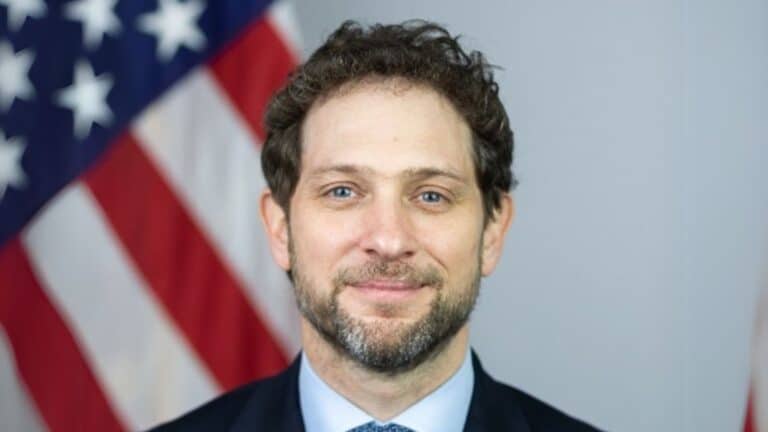
The Biden administration took office with ambitious plans to accelerate America's clean energy transition. Over four years, it enacted major climate legislation, poured billions into new clean energy...
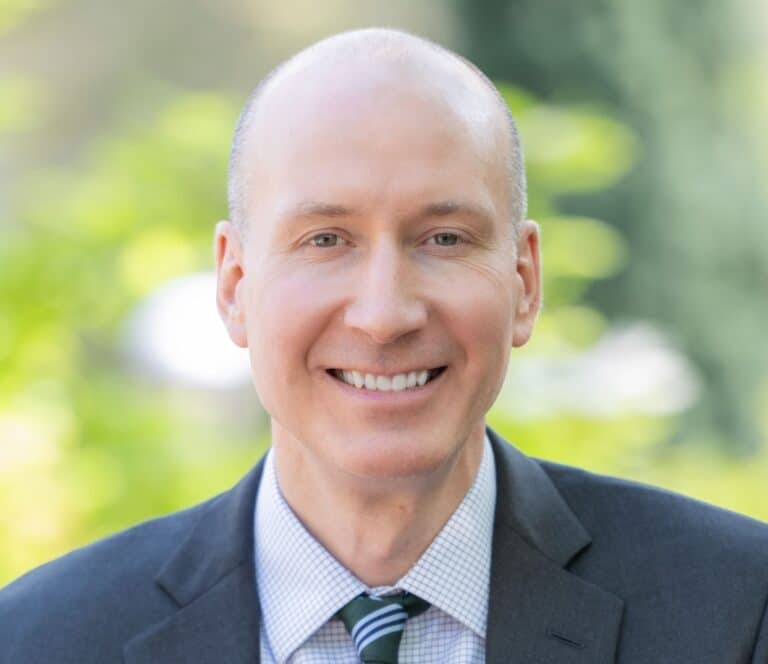
The race to power artificial intelligence is dramatically reshaping America's electricity landscape. Recent analysis from the power-consultancy firm Grid Strategies shows that between 2024 and 2029, US electricity...
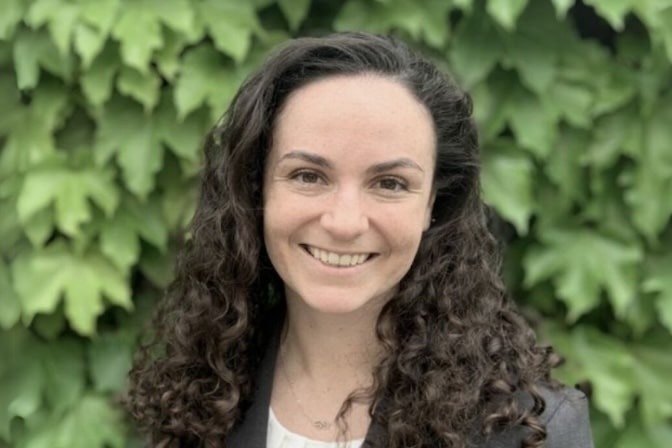
Europe is facing a challenging year as natural gas prices surge. While the continent seemed to weather the initial shock of losing Russian gas supplies, it’s now clear...
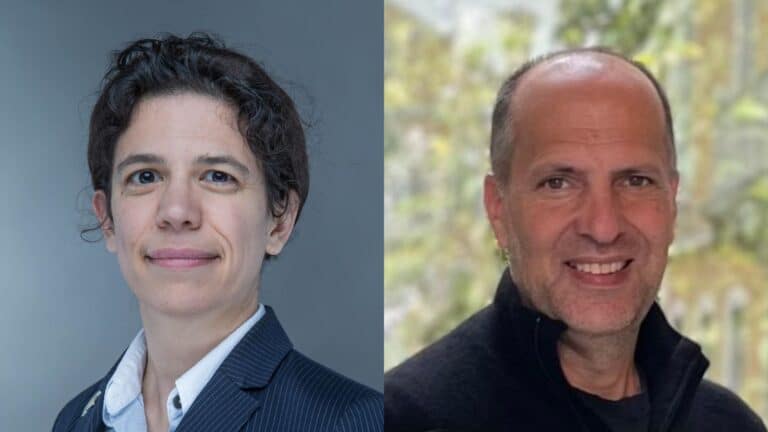

President Donald Trump has made energy a clear focus for his second term in the White House. Having campaigned on an “America First” platform that highlighted domestic fossil-fuel growth, the reversal of climate policies and clean energy incentives advanced by the Biden administration, and substantial tariffs on key US trading partners, he declared an “energy emergency” on his first day in office.

While he hasn’t released an official plan, Trump’s playbook the last time he was in office and his frequent complaints about clean energy offer clues to what’s ahead.
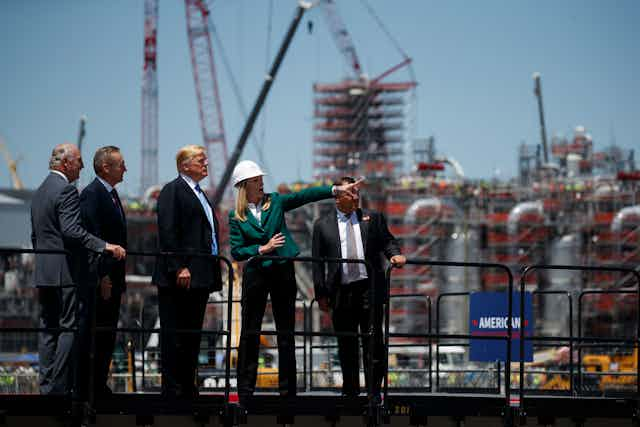
November’s election for president of the United States will have crucial implications for the nation’s and world’s energy and climate policies.
